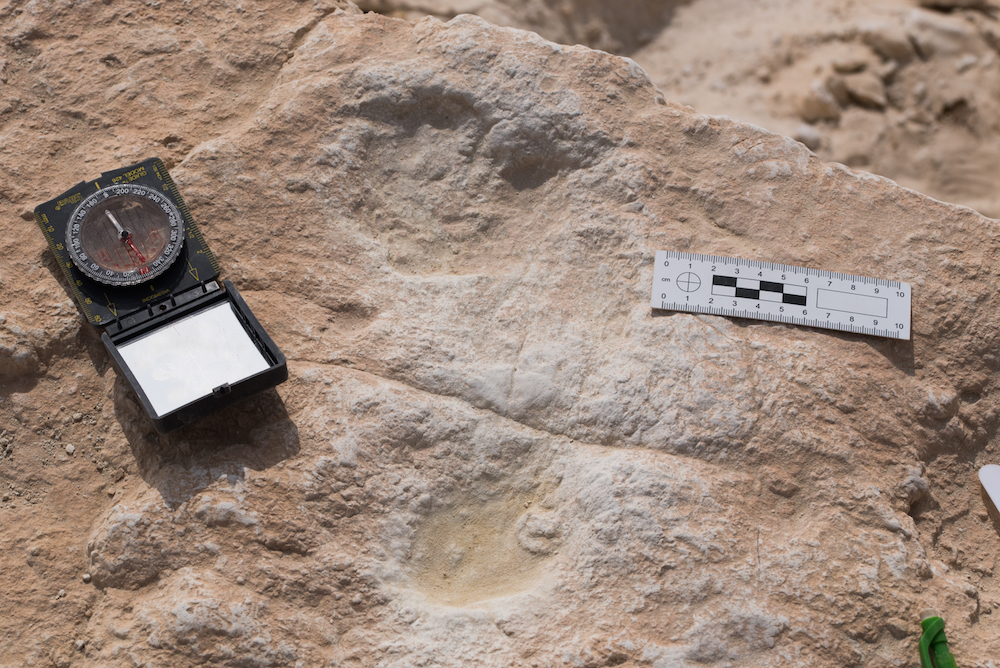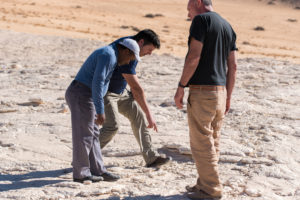
Scientists have identified tracks left on an ancient freshwater lake in the Arabian Peninsula as the earliest trace of human arrival in the area from about 120,000 years ago.
Griffith University researchers were part of an international study that discovered the footprints in the south-western part of the Nefud Desert left by humans using the area as a place to drink and to forage.

Published in Science Advances, the study was led by Dr Mathew Stewart from the Max Planck Institute for Chemical Ecology, while Dr Mathieu Duval and from Griffith University’s (ARCHE) helped discover and identify the footprints and dated fossils found with the prints.
“In human migration out of Africa there is evidence of early humans older than 100,000 years in the Near East (Israel) and in Asia, but until now we have had no evidence of what happened in Arabia; the area in between,” Dr Duval said.
“So this discovery in the region dated to within the last interglacial period fills a significant knowledge gap in our understanding of the origin and dispersal of our species.
“The sediment the footprints were found in was dated to 120,000 years using a method called Optically Stimulated Luminescence (OSL), which determines how long ago the quartz grains were last exposed to sunlight. This makes these footprints the oldest evidence of human presence in Arabia.”


But human footprints were only a small fraction of what was discovered at the site. The researchers recorded a total of 376 footprints, half of which they could attributed to a particular species.
“Of those, elephants and camels were the most abundant, yet there was also buffalo and horses in the area at that time,” Associate Professor Louys said.
“It was only the presence of freshwater lakes in the region that made the area so habitable for such a diverse community of elephants, camels, oryx, horses, buffaloes and humans.
“The footprints of two to three people travelling together were actually following the tracks of these other animals, showing a similar use of these well-watered semi-arid grassland areas.
“These footprints provide an unprecedented snapshot of the environmental conditions that existed 120,000 years ago; an environment that was very different to that found in the region today.”






/SSM-49520_AoA_AppliedMechanicsLab_(DynamicsLab)241001-131027q10.jpg/_jcr_content/renditions/cq5dam.web.1280.720.jpeg)

